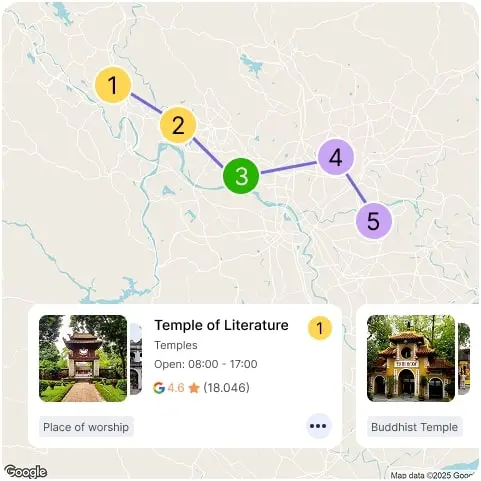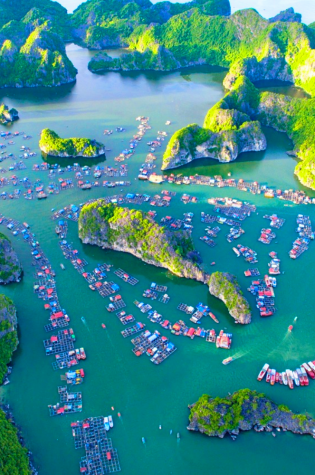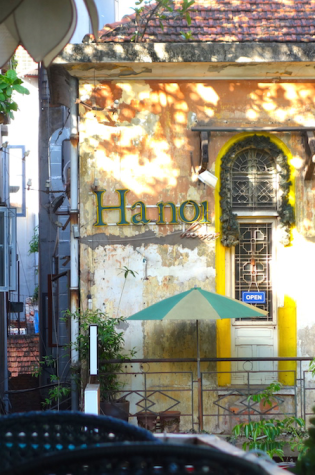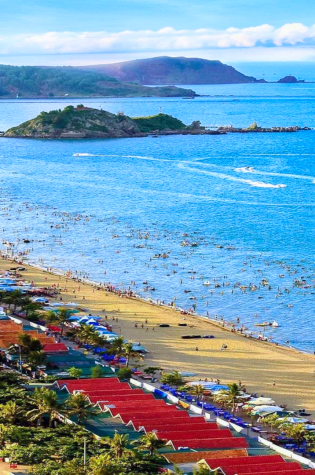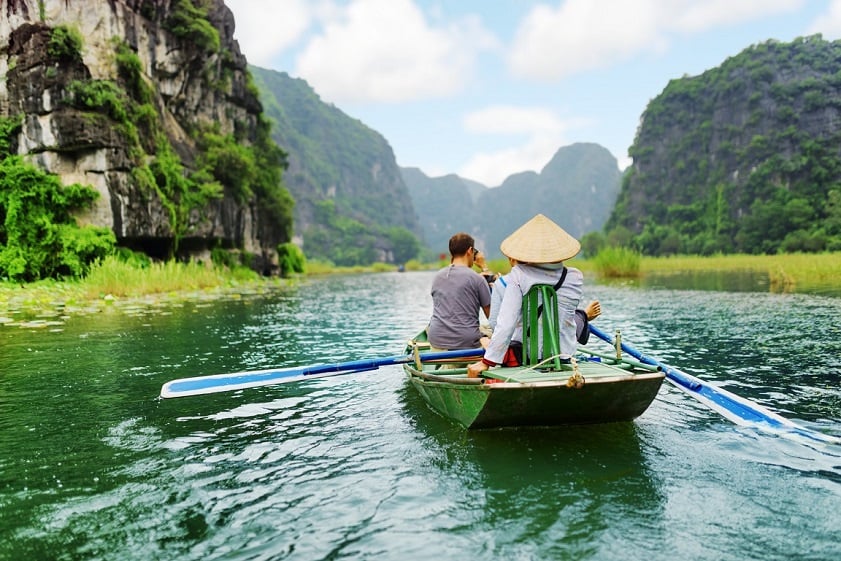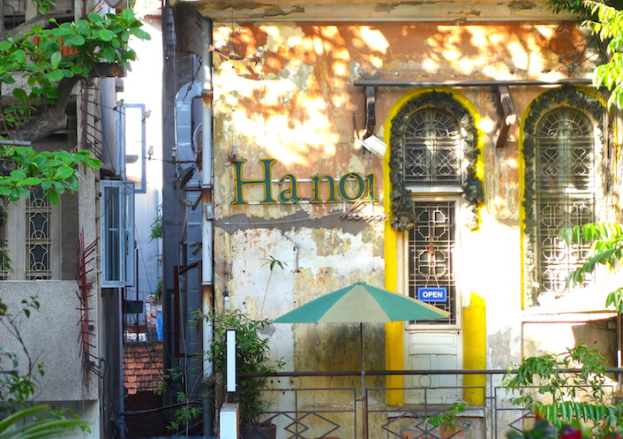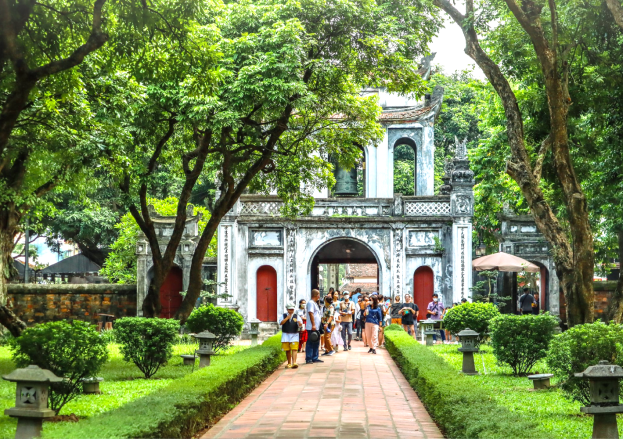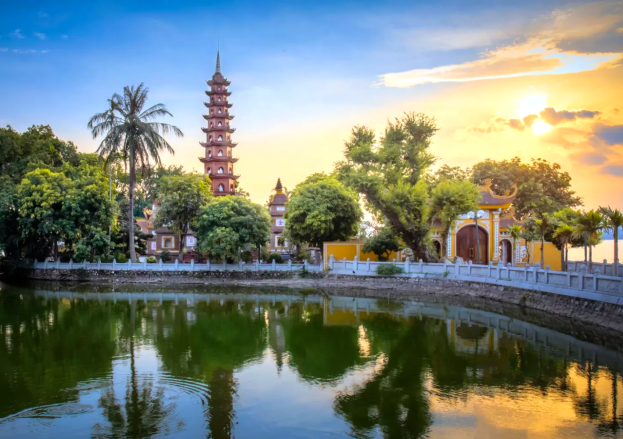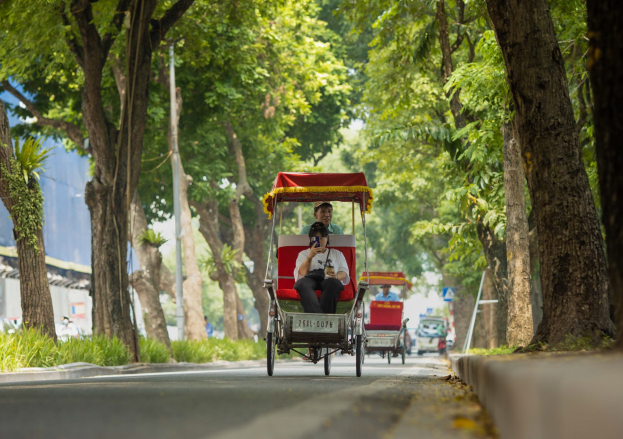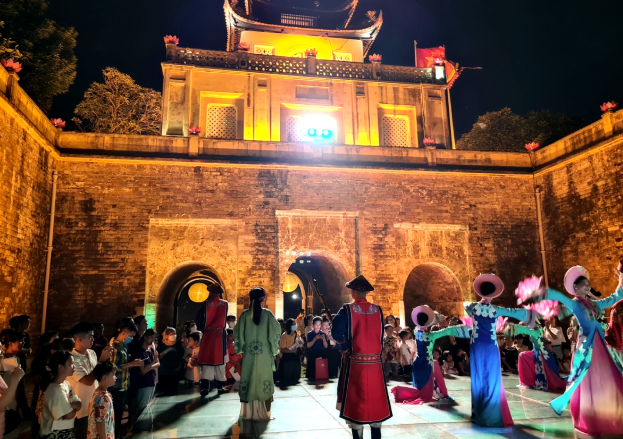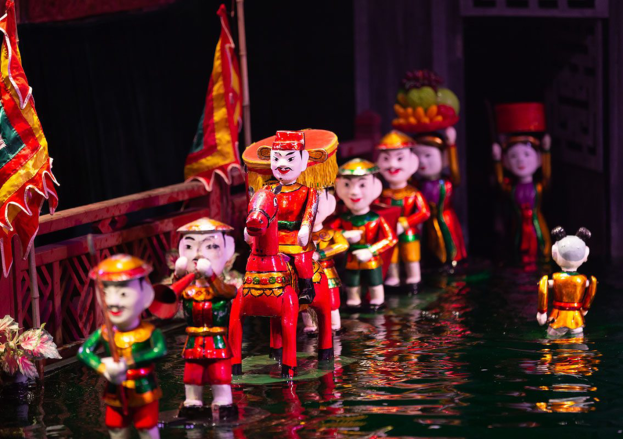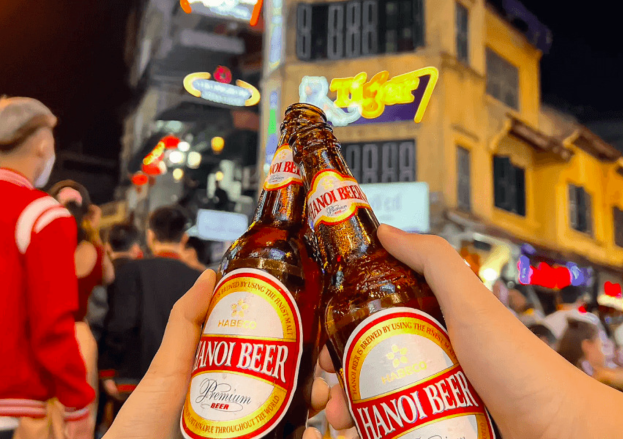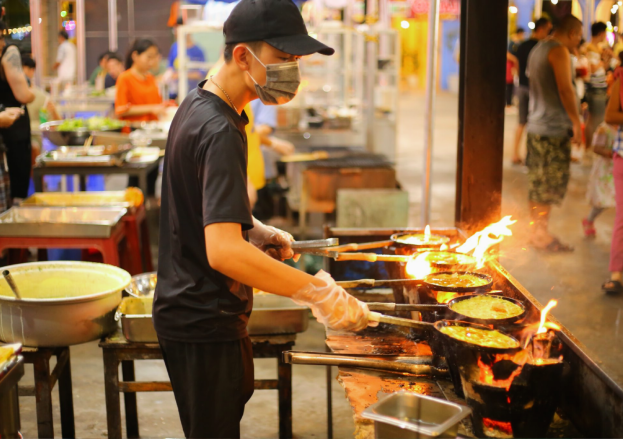
Caves and Waterfalls
Journey through Vietnam’s caves and waterfalls, where hidden passages and sparkling waters reveal nature’s secrets. Every step invites adventure, awe, and a closer connection to the country’s stunning landscapes.
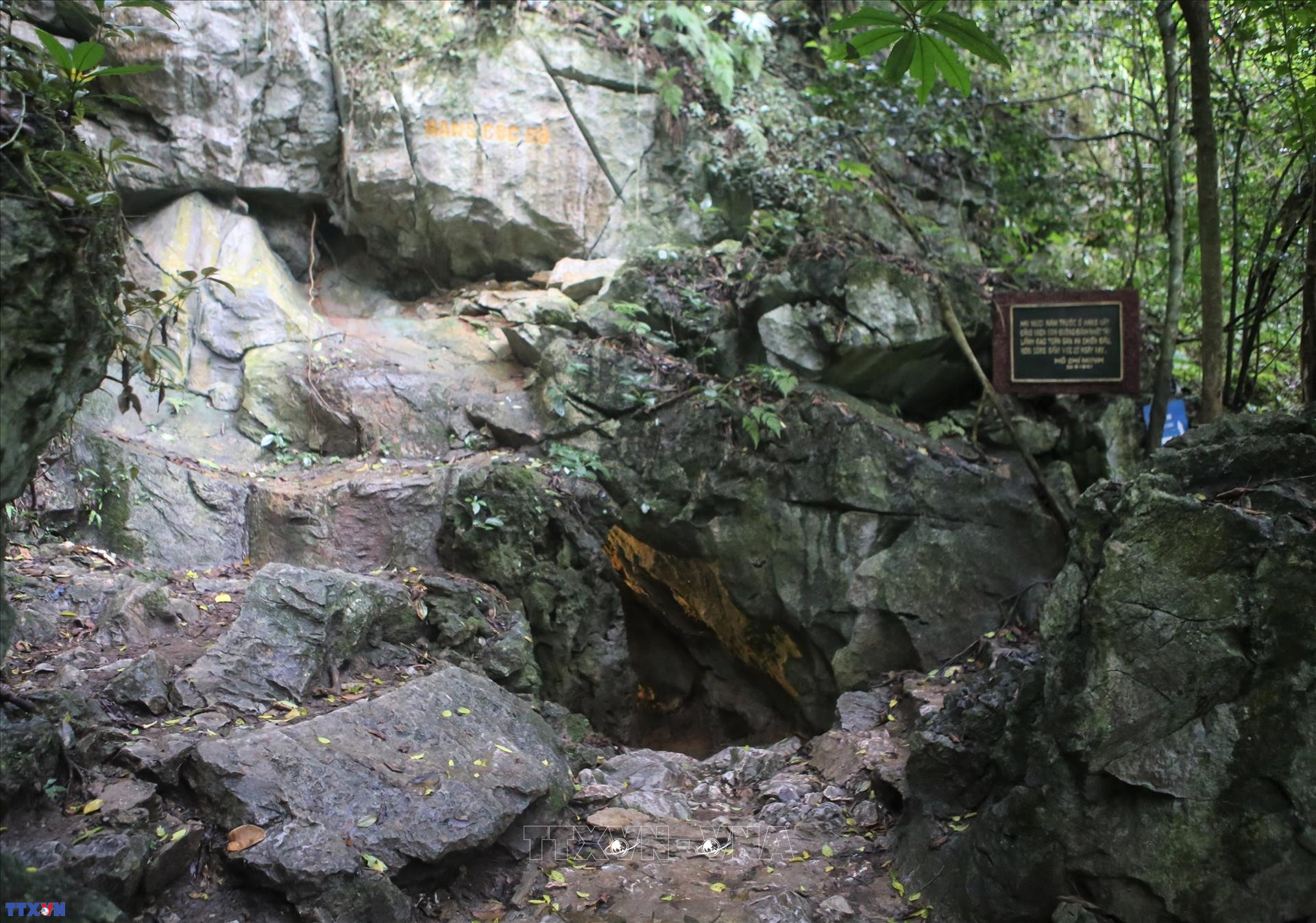
Exploring Pac Bo Cave: A revolutionary heritage amidst Cao Bang Mountains
06 Sep, 2025
Deep within the rugged mountains of Cao Bang Province lies Pac Bo Cave, a site that carries profound historical significance for Vietnam while also offering breathtaking natural beauty. Surrounded by limestone peaks, lush forests, and crystal-clear streams, Pac Bo is more than just a cave—it is a sacred landmark where President Ho Chi Minh lived and worked after returning to Vietnam in 1941, laying the foundation for the country’s independence movement. Today, this destination stands as both a revolutionary heritage site and an inviting travel experience for those who seek to connect with Vietnam’s history and its pristine landscapes. The Historical Importance of Pac Bo Pac Bo Cave, which means “the source” in the local Tay language, truly lives up to its name. In February 1941, after three decades abroad, President Ho Chi Minh returned to his homeland and chose this remote cave as his base of operations. For weeks, he lived in simplicity—sleeping on bamboo mats, cooking with firewood, and working tirelessly by the light of oil lamps. It was here that he translated important Marxist texts, organized revolutionary plans, and nurtured the early strategies that would eventually lead to Vietnam’s declaration of independence in 1945. Every rock, stream, and tree in this area has since become a witness to those critical moments in history, making Pac Bo a living museum of Vietnam’s path to freedom. Today, visitors can still see the modest bamboo bed, stone table, and simple belongings that President Ho Chi Minh used during his time in the cave. These artifacts remind us that great revolutions often begin in the most humble of places. Lenin Stream and Karl Marx Mountain One of the most iconic images of Pac Bo is Lenin Stream, a clear turquoise river that flows gently past the cave. Its water is so pure that pebbles at the bottom shimmer like jewels under the sunlight. President Ho Chi Minh often sat by this stream to read, write, or fish for food. To this day, the stream remains a symbol of simplicity and resilience, drawing countless visitors who wish to walk along its banks and reflect on history. Opposite the stream stands Karl Marx Mountain, a limestone peak named by President Ho Chi Minh to honor the great philosopher whose teachings deeply influenced his revolutionary path. Together, Lenin Stream and Karl Marx Mountain form a natural yet symbolic setting, highlighting the ideological foundation upon which Vietnam’s independence was built. The Natural Beauty of Pac Bo Beyond its historical value, Pac Bo is a site of exceptional natural beauty. The entire area is nestled within Cao Bang’s limestone karst landscape, which has earned UNESCO recognition as part of the Non Nuoc Cao Bang Geopark. The karsts rise dramatically against the horizon, their cliffs softened by lush vegetation. During spring and summer, wildflowers bloom along the riverbanks, while autumn brings a golden glow to the terraced fields surrounding the villages. The cave itself, though small and modest, opens into a cool interior that provides shelter from the heat. Visitors can walk inside and imagine the days when this hidden space served as the nerve center of Vietnam’s revolution. Just outside, the gentle murmur of Lenin Stream and the songs of birds in the forest create an atmosphere of peace and contemplation. Local Culture and Community Pac Bo is located in a region predominantly inhabited by ethnic groups such as the Tay and Nung. Their villages, with traditional stilt houses and warm hospitality, add another layer of charm to the journey. Travelers who spend time here can experience authentic rural life—sharing meals of sticky rice, smoked pork, and local herbs, or watching traditional weaving and folk singing. These communities played a crucial role during the revolutionary years, offering shelter, food, and support to those fighting for independence. Visiting them today is not just about cultural immersion but also about paying tribute to the generations who silently contributed to the nation’s struggle. Traveling to Pac Bo – A Journey through Scenic Routes Reaching Pac Bo Cave is an adventure in itself. The site is located about 55 kilometers from Cao Bang City, and the drive takes travelers through winding mountain roads, green valleys, and picturesque villages. The journey offers countless opportunities for photography: farmers working in rice paddies, children cycling along village paths, and majestic mountains stretching endlessly across the skyline. Many visitors choose to combine their trip to Pac Bo with other famous destinations in Cao Bang, such as Ban Gioc Waterfall, one of the most beautiful waterfalls in Asia, and Nguom Ngao Cave, a vast limestone cavern filled with spectacular stalactites. Together, these sites showcase the diversity of Cao Bang as both a natural paradise and a historical heartland. Tips for Visitors To make the most of your journey to Pac Bo Cave, here are some practical tips: Best time to visit: From October to April, when the weather is dry and pleasant. Spring is especially beautiful with blooming flowers and fresh greenery. Transportation: From Hanoi, travelers can take an overnight bus to Cao Bang City, then hire a car or motorbike to reach Pac Bo. Guided tours are also available for those who prefer organized trips. What to bring: Comfortable walking shoes, water, light snacks, and a camera. If visiting villages, consider bringing small gifts for children or contributing to local crafts. Respect local customs: Dress modestly, ask before taking photos of villagers, and be mindful of the sacred significance of historical sites. What sets Pac Bo apart from other destinations is the way it seamlessly combines history, nature, and culture. Standing inside the cave, it is impossible not to feel a sense of reverence for the struggles endured here. Walking along Lenin Stream, you understand why President Ho Chi Minh found both solace and strength in this place. Meeting local villagers, you realize that the spirit of resilience and simplicity still lives on in the people of Cao Bang. For travelers seeking more than just sightseeing, Pac Bo Cave offers a profound experience. It is a destination where every corner tells a story, where nature and history converge, and where visitors can reflect on the sacrifices that shaped Vietnam’s future. Whether you are a history enthusiast tracing the footsteps of a great leader, a nature lover enchanted by karst landscapes, or a cultural explorer curious about ethnic traditions, Pac Bo welcomes you with its unique blend of heritage and beauty. In the quiet flow of Lenin Stream and the shadow of Karl Marx Mountain, you will find not only a memory of the past but also inspiration for the journey ahead.
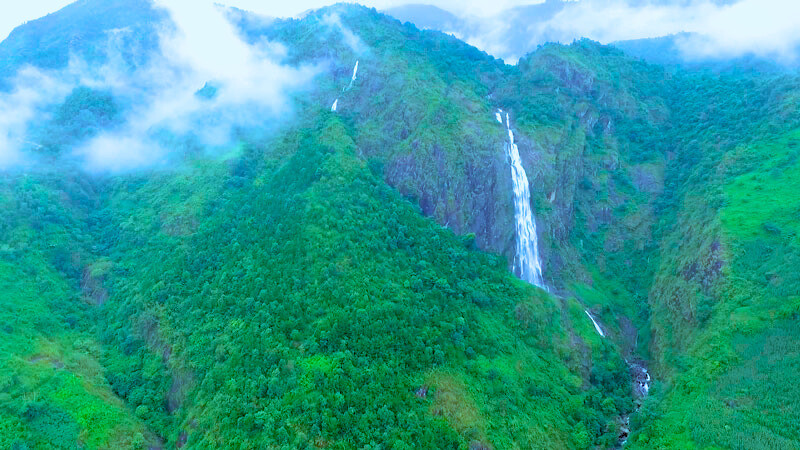
Immerse in the Northwest Nature at Tac Tinh Waterfall
06 Sep, 2025
Gateway to Northwest Beauty The Northwest of Vietnam has long been known for its untamed landscapes, misty mountains, and rich ethnic traditions. Among its hidden treasures, Tac Tinh Waterfall (Thác Tác Tình) in Lai Chau stands out as a place where nature and legend harmonize to create a destination that is both breathtakingly beautiful and deeply meaningful. Located about 30 kilometers from Lai Chau City, this waterfall is often described as one of the province’s most captivating natural attractions—yet it remains pleasantly untouched by mass tourism, making it a sanctuary for those who seek tranquility and authenticity. The Legend of Love and Sorrow What makes Tac Tinh more than just a waterfall is its moving legend. Locals tell the tale of a young man from the Dao ethnic group who fell deeply in love with a graceful girl from the Giay community. Bound by cultural traditions and family opposition, their love was forbidden. In her grief, the young girl is said to have thrown herself into the cascade, and her spirit merged with the rushing waters. From then on, the waterfall was called Tac Tinh, which translates to “Love Waterfall,” a name that forever preserves the memory of their tragic yet enduring love. For visitors, this story adds a layer of emotion to the scenery. The sound of the falling water seems to echo the pain of separation while also symbolizing eternal devotion—an inseparable part of the waterfall’s identity. A Natural Masterpiece Tac Tinh Waterfall drops from a height of around 130 meters, cascading down like a silver ribbon against the deep green backdrop of the mountain. The water splits into streams that crash into the rocky cliffs below, creating misty veils that sparkle in the sunlight. At the base lies a crystal-clear pool, where the water is cool enough to instantly refresh anyone who dips their hands or feet. The journey to the waterfall is as enchanting as the destination itself. Visitors pass through narrow mountain roads lined with terraced rice fields, bamboo groves, and traditional stilt houses, each turn revealing a glimpse of the Northwest’s grandeur. As you approach the waterfall, the sound of rushing water grows louder, blending with the calls of forest birds and the rustling of leaves in the breeze. The surrounding landscape is equally captivating. Wild orchids cling to mossy rocks, ferns thrive in the damp air, and butterflies dance above the water’s edge. For photographers, Tac Tinh is a natural canvas that shifts with the light of day—from golden sunrise to soft afternoon glow and mystical twilight. An Escape into Peace and Simplicity Unlike more famous waterfalls in Sapa or Cao Bang, Tac Tinh remains peaceful and unspoiled. This is a place where travelers can take their time, sit quietly by the water, and let the cool mist wash away the noise of daily life. The calmness of the area makes it an ideal retreat for those who wish to meditate, write, or simply reconnect with themselves. Visiting Tac Tinh is not just about seeing—it is about feeling. The distant laughter of children from nearby villages, the earthy scent of the forest, and the rhythmic roar of the waterfall together create a sensory experience that stays with you long after you leave. A Blend of Nature and Culture Beyond the waterfall, the villages of the Dao and Giay ethnic groups offer opportunities to experience the cultural richness of Lai Chau. Visitors can observe traditional weaving, taste local specialties like thắng cố (a traditional horse meat soup) or sticky rice dyed with natural colors, and listen to folk songs passed down through generations. The warmth and hospitality of the locals often turn a short trip into lasting memories. Staying in a homestay near the waterfall provides a deeper experience, where evenings are spent by the fire listening to legends, sharing tea, and enjoying the unique rhythm of life in the highlands. Here, the connection between nature and people becomes clear: the waterfall is not just scenery, but part of a living culture. Practical Tips for Travelers Best time to visit: March to May (spring) and September to November (autumn) are ideal, with pleasant weather, lush greenery, and the waterfall at its most graceful. The rainy season (June–August) makes the waterfall more powerful but can make roads slippery. Getting there: From Lai Chau City, it’s a scenic 30 km journey by car or motorbike. The winding roads are narrow but reward travelers with sweeping mountain views. Entrance fee: A small ticket fee is collected, which supports the preservation of the site. What to bring: Comfortable shoes for walking, light snacks, water, and a good camera. A light jacket is recommended as temperatures in the mountains can drop quickly, especially in the late afternoon. Local etiquette: Be respectful when visiting villages nearby—ask before taking photos, and try sampling local dishes to support the community. Why Tac Tinh Waterfall Should Be on Your Itinerary Tac Tinh Waterfall is not as famous as Ban Gioc or Silver Waterfall, but its charm lies in its intimacy and authenticity. It is a place where travelers can step away from crowded tourist trails, discover untouched natural beauty, and immerse themselves in the soulful stories of the Northwest. Here, every element—from the powerful cascade and verdant forests to the heartfelt legend and welcoming people—creates a holistic experience that captures the spirit of Vietnam’s highlands. To visit Tac Tinh Waterfall is to immerse yourself in a world where nature, legend, and culture intertwine. It is not just a destination to admire, but a place to feel deeply—whether it is the cool spray of the water, the weight of a timeless love story, or the peace of a simple village life. For those who seek not only sights but also soulful experiences, Tac Tinh Waterfall is a reminder that the most meaningful journeys are found in places where beauty is both seen and felt.
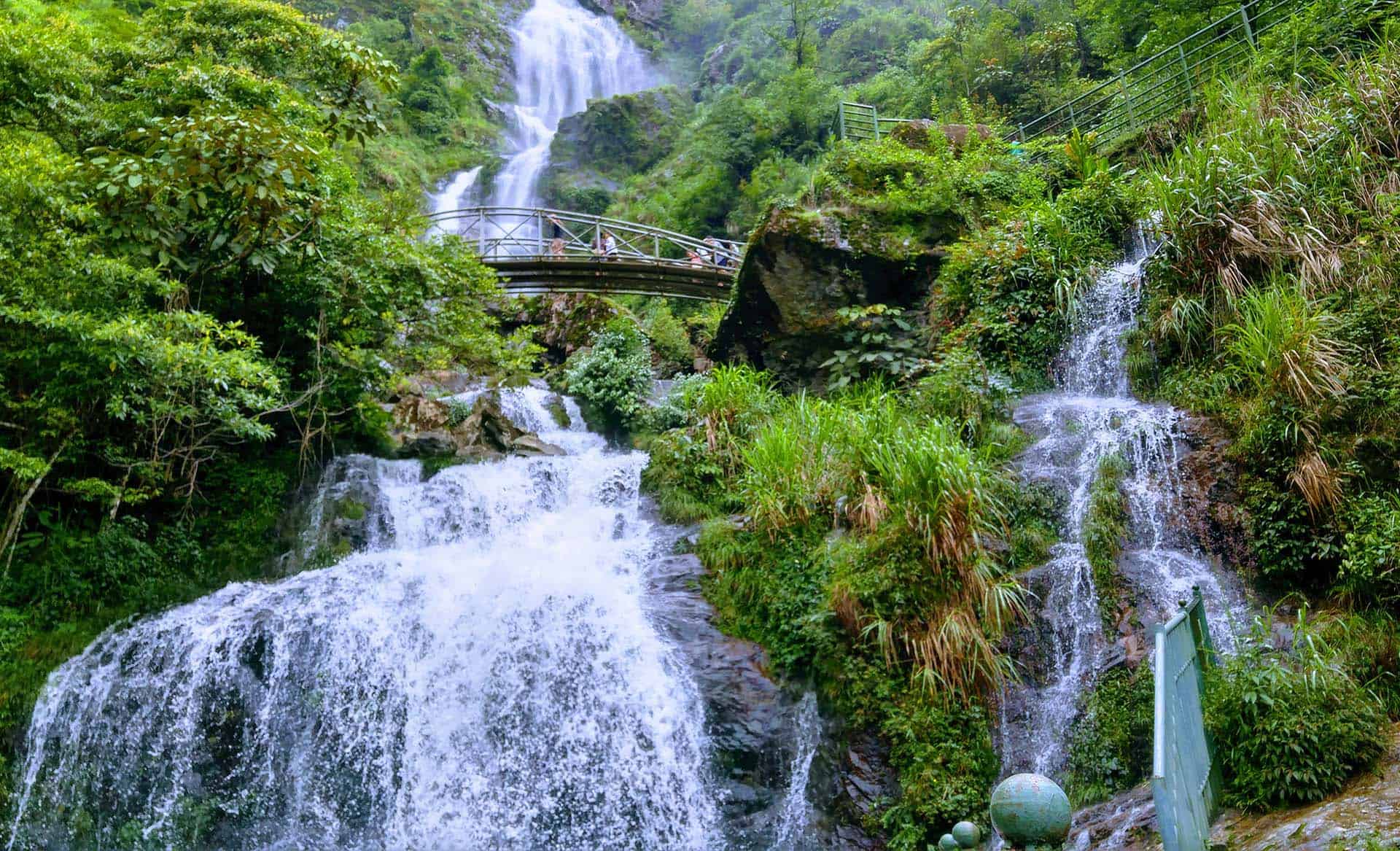
A Natural Wonder on the Way to Heaven’s Gate
06 Sep, 2025
A Natural Wonder on the Way to Heaven’s Gate Located about 12 kilometers from Sapa town along the road to Lai Chau, Silver Waterfall (Thác Bạc) is one of the most iconic natural attractions in the Northwest of Vietnam. Surrounded by towering mountains and lush pine forests, the waterfall is a breathtaking sight where nature displays its raw power and elegance. With water cascading down from a height of over 200 meters, Silver Waterfall lives up to its name, sparkling like liquid silver under the sunlight. For travelers making their way to Tram Ton Pass and the legendary Heaven’s Gate, Silver Waterfall is a perfect stop, offering both scenic beauty and a refreshing escape from the bustle of Sapa town. The Majestic Charm of Silver Waterfall The waterfall originates from the streams high up on Fansipan Mountain, the “Roof of Indochina.” Its water gushes down steep cliffs, creating white foam and a roaring sound that echoes through the valley. During summer, when the water flow is strongest, the cascade is at its most impressive—powerful yet graceful, painting a mesmerizing picture of natural grandeur. In winter, mist often surrounds the waterfall, blending with the sound of rushing water to create a mystical, dreamlike atmosphere. Visitors standing nearby can feel the cool spray on their skin, a refreshing contrast to the trek uphill. From the base of the waterfall, travelers can climb a stone stairway to reach higher viewpoints. From there, the panorama of mountains, valleys, and forests unfolds magnificently, offering plenty of photo opportunities for nature lovers. A Perfect Escape for Nature Enthusiasts Silver Waterfall (Thác Bạc) is far more than a scenic spot—it is a sanctuary for those seeking to reconnect with nature. Nestled amidst towering mountains and lush pine forests, the waterfall offers visitors a rare opportunity to immerse themselves in a pristine, tranquil environment. The moment one approaches, the air grows cooler and fresher, carrying the subtle scent of damp earth and pine needles. The constant roar of cascading water, harmonizing with the gentle calls of forest birds, creates a natural symphony that soothes the mind and invigorates the senses. Walking along the stone paths and viewing platforms, visitors can pause to absorb the scenery, taking in the vibrant greens of the surrounding vegetation, the crystal-clear spray of the waterfall, and the rhythmic flow of water over rocks. The experience is often described as both energizing and calming—a perfect balance between nature’s raw power and its serene beauty. For many, it becomes a meditative moment, a chance to breathe deeply, reflect, and rejuvenate both body and spirit. The area surrounding Silver Waterfall is also a hotspot of biodiversity, making it a paradise for eco-tourists and wildlife enthusiasts. Dense forests at high altitudes are home to a variety of native flora, including ferns, wildflowers, and coniferous trees, which create a rich, layered canopy over the valleys. The foliage not only adds to the visual beauty but also provides shelter for numerous bird species, from brightly colored songbirds to elusive forest dwellers. Birdwatchers may spot the flutter of wings or hear melodic calls echoing through the mountains, adding another dimension of wonder to the visit. For those with an interest in ecology or nature photography, the combination of mist, sunlight, and flowing water presents endless opportunities to capture stunning, dynamic landscapes. Hikers and nature lovers can explore nearby trails, discovering hidden viewpoints, smaller streams, and secluded patches of forest, each offering a unique perspective on the region’s natural charm. Practical Tips for Visiting Silver Waterfall Best time to visit: March to May (spring) and September to November (autumn), when the weather is mild and the scenery is at its best. In the rainy season, the waterfall is strongest, but the path may be slippery. How to get there: Located about 30 minutes by motorbike or car from Sapa town along National Highway 4D toward Lai Chau. Entrance fee: A small fee is required, which contributes to local conservation efforts. What to bring: Comfortable shoes, a light jacket (it can be cool at high altitudes), and a camera to capture the stunning views. Silver Waterfall Sapa is a natural gem that showcases the majestic charm of the Northwest mountains. Whether you stop by on your way to Tram Ton Pass or make it a highlight of your Sapa journey, the waterfall promises unforgettable moments with its raw beauty and serene atmosphere. For those seeking both awe-inspiring scenery and a refreshing escape, Silver Waterfall is truly a must-visit destination in the highlands of Vietnam.
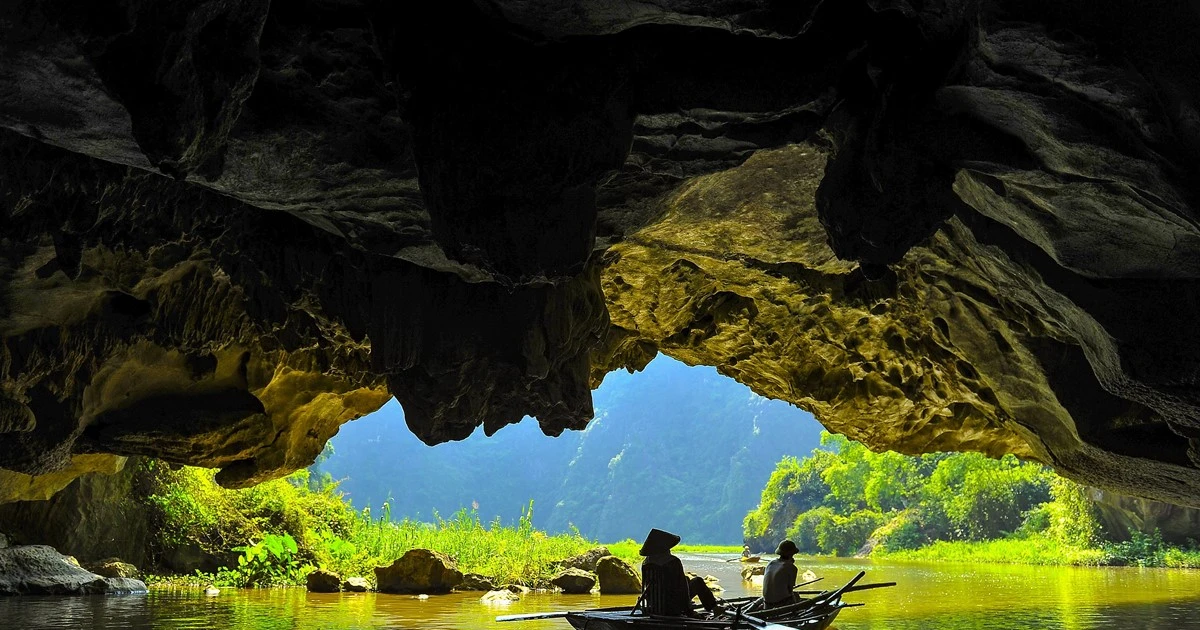
Experience Tam Coc and Bich Dong Floating through hidden caves
06 Sep, 2025
A Gateway to the Natural Wonders of Ninh Binh Located just a two-hour drive from Hanoi, Ninh Binh has earned its reputation as the “hidden gem” of Northern Vietnam. Known for its towering limestone mountains, vast emerald rice fields, and meandering rivers, the region offers a landscape that is at once majestic, serene, and timeless. Unlike the bustling streets of the capital, Ninh Binh invites travelers to slow down, breathe deeply, and immerse themselves in the subtle beauty of rural Vietnam. At the heart of this enchanting region lies Tam Coc – Bich Dong, a destination often described as a living watercolor painting. Here, nature, culture, and history merge seamlessly, creating an experience that is both visually stunning and culturally enriching. The area’s karst limestone formations rise dramatically from the gentle waters of the Ngo Dong River, evoking images of Halong Bay on land. These towering cliffs, sculpted over millennia, reflect in the calm river waters, creating mirror-like scenes that seem almost surreal, especially in the soft light of early morning or late afternoon. Drifting Along the Tam Coc River The highlight of Tam Coc is a peaceful boat ride along the Ngo Dong River. Local women skillfully row small wooden sampans, sometimes even with their feet—a unique technique that fascinates visitors. As the boat glides along the emerald water, travelers are treated to stunning scenery: rice paddies stretching on both sides of the river, changing colors with the seasons—lush green in summer, golden yellow during harvest, and earthy brown in winter. Towering limestone mountains cast their reflections on the calm surface, making the entire journey feel like a passage into a mythical realm. The name “Tam Coc” means “Three Caves,” referring to the three natural caves that the boat passes through: Hang Ca, Hang Hai, and Hang Ba. Each cave has its own charm—Hang Ca is the largest, with shimmering stalactites hanging from its ceiling; Hang Hai is smaller but filled with mystical light streaming through narrow openings; Hang Ba, though low, offers an intimate, peaceful atmosphere. Inside the caves, the sound of paddles striking the water echoes softly, adding to the sense of mystery and wonder. Exploring Bich Dong Pagoda After the river journey, the adventure continues to Bich Dong Pagoda, a historic complex built into the limestone mountain in the 15th century. Blending spirituality with natural surroundings, the pagoda is reached by climbing mossy stone steps winding up the mountainside. The complex consists of three tiers: Ha Pagoda (Lower) at the base, Trung Pagoda (Middle) halfway up, and Thuong Pagoda (Upper) at the summit. Each level offers a distinct spiritual atmosphere, from the simplicity of the lower temple to the solemn serenity of the upper shrine. From the top, sweeping panoramic views reveal rice fields, rivers, and karst peaks stretching into the horizon, creating a breathtaking scene that feels both sacred and timeless. Bich Dong is not just a place of worship but also a sanctuary for reflection and connection—with nature, with history, and with one’s inner self. Many visitors find a sense of peace here, a welcome pause from the rush of modern life. The Rhythm of Local Life What truly sets Tam Coc – Bich Dong apart from other scenic destinations is the chance to immerse oneself in the authentic rhythm of rural life. As visitors glide gently along the emerald waters of the Ngo Dong River, the surrounding landscape comes alive with scenes of daily life that have remained largely unchanged for generations. On the riverbanks, farmers diligently tend to their rice paddies, bending over the earth with practiced ease. During planting or harvesting season, their movements form a harmonious choreography, synchronized with the natural flow of the fields. Fishermen cast their nets, skillfully navigating the river’s currents, while children play by the water’s edge, laughing and splashing with carefree delight. Occasionally, small wooden boats laden with vegetables, fruits, or firewood drift past, guided by villagers on their daily errands. The village markets along the way offer another window into local life. Here, the air is filled with the aromas of fresh produce, homemade snacks, and incense from nearby temples. Villagers engage in animated conversations, bartering goods with warmth and familiarity. Every interaction is a glimpse into the community spirit that defines life in this part of Ninh Binh. Traveling by boat allows visitors to experience these moments at an unhurried pace. The limestone cliffs reflect perfectly on the river’s calm surface, creating a mirror-like image that doubles the beauty of the surroundings. The soundscape is equally captivating: the rhythmic splash of oars against the water, the occasional call of a bird from the forested cliffs, and the laughter of children echoing across the paddies. These subtle, harmonious sounds blend seamlessly with the natural environment, giving travelers a profound sense of serenity and connection with the land. Tips for Visiting Tam Coc and Bich Dong Best time to visit: Late May to early June, when golden rice fields glow under the sun. Spring and autumn also offer pleasant weather. What to bring: Sunscreen, a wide-brimmed hat, water, and a camera to capture the scenery. Boat rides: Last about 2 hours; tickets are available at Tam Coc wharf. Cycling option: Renting a bicycle is a great way to explore nearby villages, rice paddies, and quiet backroads. Tam Coc and Bich Dong are more than just beautiful sights—they are an invitation to float through hidden caves, step into history, and connect with authentic Vietnamese culture. From mysterious caves and moss-covered pagodas to the simple rhythms of daily life, every moment here feels timeless. This destination lingers in the heart of travelers not only for its breathtaking scenery but also for the peace, reflection, and sense of belonging it inspires.
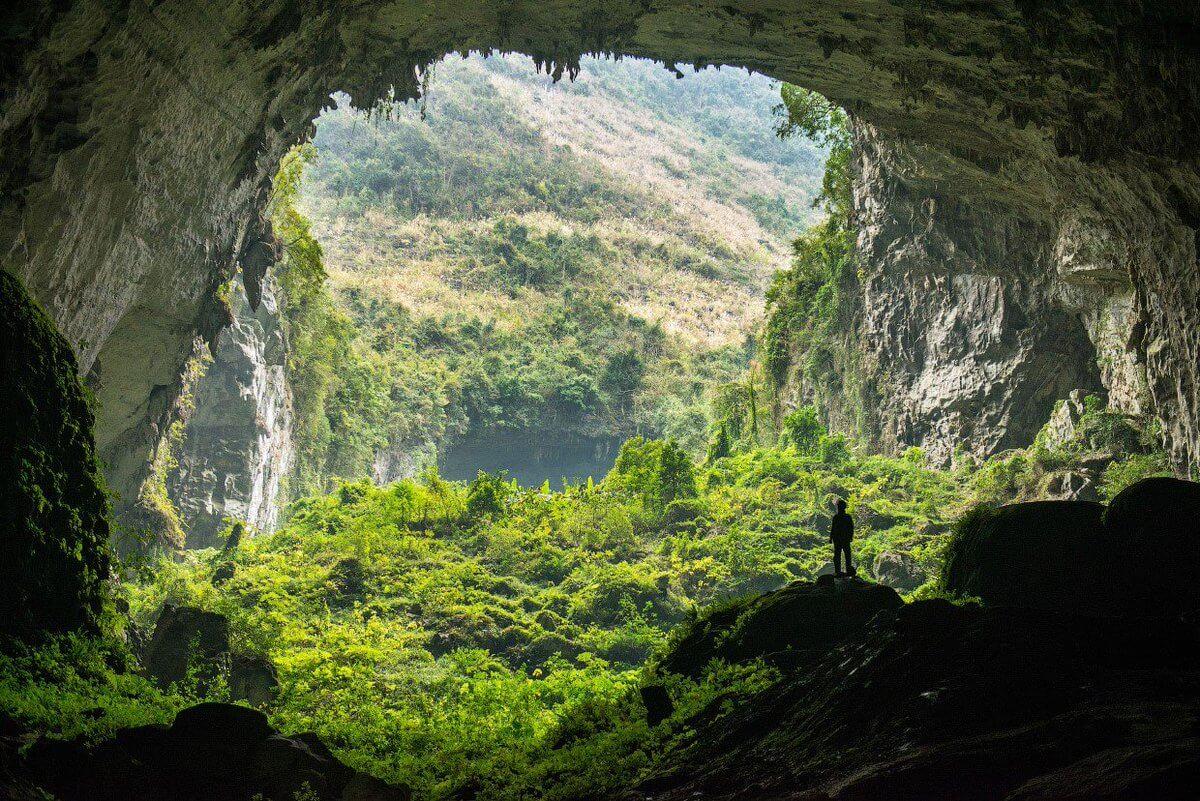
Lost in the World’s Largest Cave – Son Doong
06 Sep, 2025
A Monument of Nature Son Doong’s sheer scale is nothing short of awe-inspiring. Measuring over 200 meters in height, 150 meters in width, and stretching more than 9 kilometers long, this colossal cave could easily accommodate an entire New York City block inside its chambers. The cave’s formation dates back over 2.5 million years, sculpted by underground rivers gradually eroding the limestone. The result is a network of colossal halls, narrow passageways, and hidden chambers that feel more like stepping onto an alien planet than exploring anywhere on Earth. Walking through Son Doong, visitors immediately sense the immensity of its cathedral-like spaces. The ceiling soars high above, with stalactites and stalagmites forming intricate natural sculptures. Some stalagmites reach up to 80 meters, towering like ancient stone guardians. In several chambers, the cave roof has collapsed, allowing shafts of sunlight to pierce through and illuminate vibrant patches of greenery. This natural light gives life to mosses, ferns, and even small trees, creating an underground jungle that contrasts dramatically with the dark, cool limestone walls. The interplay of light and shadow transforms each chamber into a living, breathing work of art, where every corner seems to reveal a new wonder. The Underground World of Son Doong Son Doong is not only immense but also teeming with its own unique ecosystem. The constant interaction between warm and cool air creates fog and mist inside the cave, producing an ethereal, almost mystical atmosphere. Rivers quietly wind through the darkness, reflecting the faint light and adding a gentle murmur that enhances the sense of solitude and mystery. The areas where sunlight penetrates through collapsed ceilings become pockets of life, with rare plants and ferns thriving in unexpected corners. These sinkholes resemble natural skylights, each offering a glimpse of life flourishing in an otherwise subterranean world. The cave also holds geological marvels that capture the imagination of any explorer. One of the most iconic features is the so-called “Great Wall of Vietnam,” a 90-meter-high stalagmite that rises dramatically in the middle of the cave. Trekkers must navigate around or over this natural monument, a challenge that underscores both the power of nature and the human determination to conquer it. In other chambers, delicate formations shimmer in the filtered sunlight, while crystal-clear underground rivers mirror the ceiling above, creating surreal, almost mirrored landscapes. Beyond its physical beauty, Son Doong evokes a sense of timelessness. The scale, silence, and occasional sound of dripping water immerse visitors in an environment that feels ancient and untouched. Each step reveals layers of geological history, with rock formations and sediment patterns telling stories millions of years old. The combination of light, shadow, greenery, and the monumental scale creates an experience that is both humbling and exhilarating—a reminder of the extraordinary forces that shaped our planet and the fragile beauty that remains hidden beneath its surface. An Adventure Like No Other Exploring Son Doong is not a simple trip—it is an expedition. The journey typically lasts 4 days and 3 nights, involving jungle trekking, river crossings, and camping inside the cave itself. Trekkers sleep in designated campsites set against dramatic backdrops of colossal rock formations and underground rivers, often accompanied by the echoes of dripping water and distant winds. Every day on the expedition feels surreal: waking up to mist rising inside the cave, crossing subterranean rivers, and gazing at skylights that open up to patches of forest. The adventure requires physical stamina, but the reward is an unparalleled experience that few places on Earth can offer. Beyond the cave itself, the journey to Son Doong also allows travelers to connect with the local communities of Quang Binh. The adventure begins in Phong Nha, a small village where tourism and conservation coexist. Meeting local people, tasting regional cuisine, and hearing stories about the discovery of Son Doong add a cultural depth that enriches the entire expedition. Tips for Exploring Son Doong Best time to visit: February to August, when the weather is dry and safe for trekking. Physical preparation: The trek requires good fitness; regular hiking and endurance training are recommended. Booking in advance: Only a limited number of permits are issued each year, making early booking essential. Gear: While safety equipment and support are provided, trekkers should bring personal items such as hiking boots, lightweight clothing, and insect repellent. Son Doong is more than just the world’s largest cave—it is a journey into the unknown, a reminder of how small humans are compared to nature’s grandeur. For those who dream of venturing beyond the ordinary, Son Doong offers an adventure that is both humbling and transformative. To step inside its massive chambers is to be lost, not in confusion, but in awe and wonder at one of the greatest treasures of our planet.
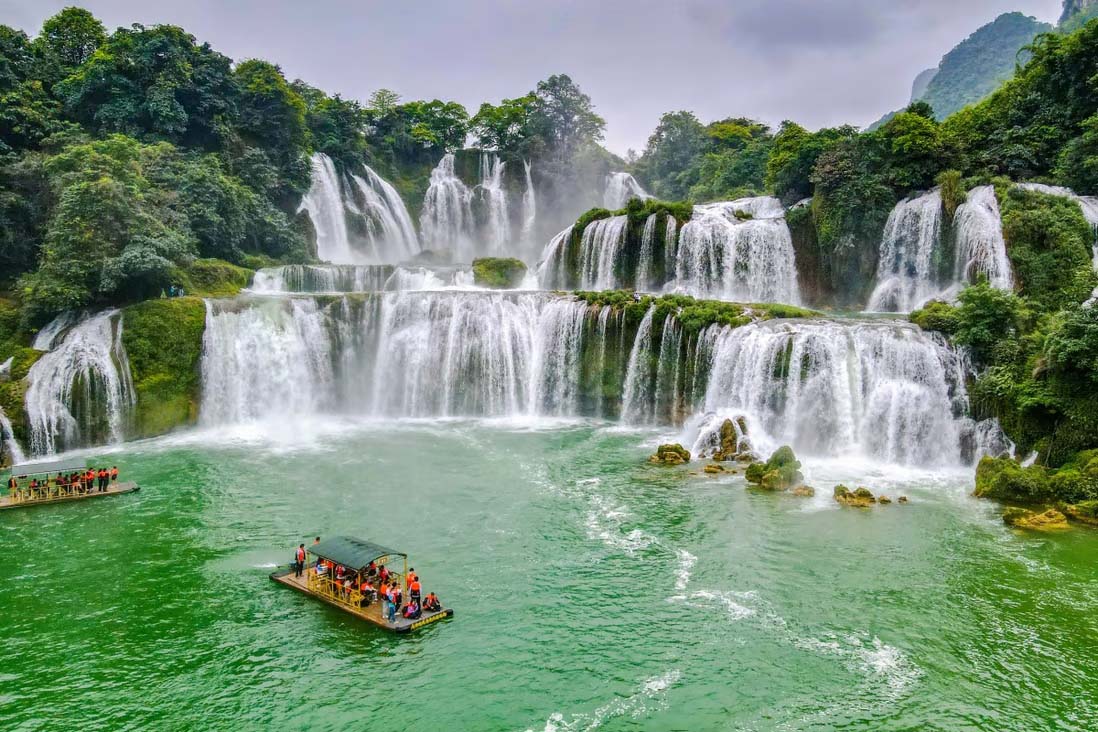
Top acitivities adventures to enjoy at Vietnam's Ban Gioc Waterfall
29 Aug, 2025
Where is Ban Gioc Waterfall? Ban Gioc Waterfall is located in the northernmost province of Cao Bang, Vietnam, near the border with China. Nestled in the lush, mountainous terrain, it is about 360 km from Hanoi, making it a popular destination for travelers seeking a scenic escape from the city. The waterfall sits along the Quay Son River, which originates in China and flows into Vietnam, forming a breathtaking natural border. The Beauty of Ban Gioc Waterfall Ban Gioc is one of the most stunning waterfalls in Vietnam and Southeast Asia. It consists of multiple cascades that stretch nearly 300 meters wide, with water plunging over limestone cliffs into emerald green pools below. The surrounding scenery is equally enchanting, with terraced rice fields, karst mountains, and traditional villages creating a serene backdrop. During the rainy season, the waterfall’s volume swells dramatically, creating a roaring spectacle, while in the dry season, the flowing water reveals its crystal-clear beauty, perfect for photography and sightseeing. Must-Do Activities at Ban Gioc Waterfall Exploring Ban Gioc Waterfall offers a mix of adventure, relaxation, and cultural experiences. Here are the top activities you shouldn’t miss: Boat Tours on the Quay Son River: Take a bamboo boat ride along the river to get up close to the cascading waterfalls. The ride allows you to experience the full power and scale of Ban Gioc while capturing stunning photos from unique angles. Trekking and Hiking: The surrounding mountains and trails offer excellent trekking opportunities. Hike along the limestone cliffs or through nearby villages to enjoy panoramic views of the waterfall and the lush countryside. Exploring Nearby Caves: There are several small caves near Ban Gioc that are fun to explore. These caves provide insight into the geological features of the area and offer some shaded resting spots during hikes. Photography and Sightseeing: The waterfall is a photographer’s paradise. Sunrise and sunset create beautiful lighting for capturing the cascading waters, mist, and verdant landscapes. Drones can also be used in permitted areas for breathtaking aerial views. Cultural Experiences in Local Villages: The Tay and Nung ethnic communities live near the waterfall. Visiting their villages allows you to experience traditional crafts, sample local cuisine, and interact with friendly locals, enriching your Ban Gioc adventure. Tips for enjoying Ban Gioc Waterfall activities Wear Comfortable Shoes: Trekking and exploring trails require sturdy, non-slip footwear. Bring Waterproof Gear: Mist from the waterfall can soak your clothes and camera, so rain jackets or ponchos are recommended. Pack Snacks and Water: While there are some small local stalls, it’s best to bring your own refreshments for longer explorations. Respect the Environment: Avoid littering and stay on marked paths to preserve the natural beauty of the area. Check Weather Conditions: The waterfall is most impressive during the rainy season (July–September), but trails may be slippery. The dry season (October–April) offers easier hiking and calmer water for boat rides. Hire a Local Guide: For trekking, boat tours, or visiting ethnic villages, a local guide can enhance your experience and ensure safety. A visit to Ban Gioc Waterfall offers more than just stunning scenery—it’s an opportunity to immerse yourself in nature, adventure, and local culture. From kayaking along the cascading waters to trekking nearby trails, every activity promises unforgettable memories. Whether seeking thrill or tranquility, Ban Gioc remains a must-visit destination in northern Vietnam.
Experiences & Activities

Nha Trang Half-Day Snorkeling Adventure with BBQ Onboard
1 day
Relax at Vung Tau Beach Visit Christ the King Statue Explore Whale Temple (Den Ca Ong) Discover the historic White Palace (Bach Dinh) Admire the panoramic sea view at Nghinh Phong Cape

A romantic & adventurous Vietnam journey in 10 days 9 nights
10 days 9 nights
Embark on a captivating 10-day odyssey through Vietnam, perfectly curated for couples seeking both profound cultural immersion and exhilarating adventure. This journey weaves together the ancient charm of Hanoi with the mystical karst landscapes of Halong Bay, offering an overnight cruise under a starlit sky. Discover the imperial grandeur of Hue and the timeless allure of Hoi An, where lantern-lit nights and riverside tranquility set the scene for romance. Venture into the vibrant Mekong Delta, exploring its floating markets and lush waterways. Throughout your trip, you'll experience Vietnam's diverse beauty, from serene sunrises to thrilling activities, creating cherished memories that celebrate your love amidst breathtaking backdrops. This is more than a tour; it's a shared adventure into the heart and soul of Vietnam.

5D4N_HANOI – HALONG ON CRUISE EXPLORATION
5 days 4 nights
Spend 2 days cruising around Halong Bay, Lan Ha Bay or Bai Tu Long Bay. Highlights include Sung Sot Cave and Titop Island for Halong, Cat Ba Island and Dark and Bright Cave for Lan Ha, and Thien Cahn Son Cave and Vung Vien Floating Village for Bai Tu Long. Tour includes accommodation at different luxury levels, meals, activities and round-trip transfers from Hanoi. Overnight cruise around Halong, Lan Ha or Bai Tu Long bay Stay in an air-conditioned cabin with private bathroom Boats and accommodations range from three to five stars Activities can include kayaking, bamboo boat, cooking and tai chi

Highlight North Vietnam 7 days adventure
7 days 6 nights
Are you looking for a destination that’s equal parts adventure, culture, and jaw-dropping scenery? Immerse yourself in breathtaking landscapes, rich history, and culinary delights by getting ready for an unforgettable journey through Highlight North Vietnam 7-Day Adventure. From Hanoi’s bustling streets, the misty town of Sapa to Ninh Binh’s ancient land and natural wonder of Halong bay. This 7-day itinerary is crafted for those seeking adventure, culture, and relaxation. Dive into local experiences, scenic landscapes, and heart of Vietnamese culture!
![[S.I.C] Yen Duc village overnight: 2 day 1 night](https://ilooca-tourdb.itourism.vn//files/thumb/408/285/uploads/content/Yen-Duc-Village-Vietnamese-Local-Life_9_2017_03-770x513_1.jpg)
[S.I.C] Yen Duc village overnight: 2 day 1 night
2 days 1 night
This 2 day 1 night trip includes a nice stay in Viet House, unique village retreat accommodation, surrounded by rice fields in Yen Duc village. Cycling to discover peaceful village, talking with local people and visit their family house should amaze you with lots of cultural sense and fun. Besides that, joining local activities (fishing, gardening, visiting the culture house of village, local market…) bring you close to real experience of a farmers, taste delicious homemade Vietnamese food then enjoy peaceful life in countryside of Vietnam.

The perfect 3-day Sapa itinerary for first-timers
3 days 2 nights
Prepare to be captivated by a journey where mist-shrouded peaks meet vibrant cultural tapestries. This 3-day, 2-night escape from Hanoi plunges you into the heart of Sapa's unparalleled beauty. Imagine tracing the contours of iconic terraced rice fields, a masterpiece sculpted by generations, and breathing in the crisp mountain air. Beyond the breathtaking panoramas, you'll connect intimately with the resilient ethnic minorities – the H'Mong people – in their traditional villages, witnessing ancient customs and intricate handicrafts firsthand. For the ultimate perspective, an optional ascent to Fansipan, "The Roof of Indochina," offers a spectacular vista where clouds dance below your feet. This isn't just a tour; it's an immersive odyssey into the soul of Vietnam's highlands, promising memories that will linger long after you return.
Keep exploring
Top things to do in Caves and Waterfalls
FAQs
